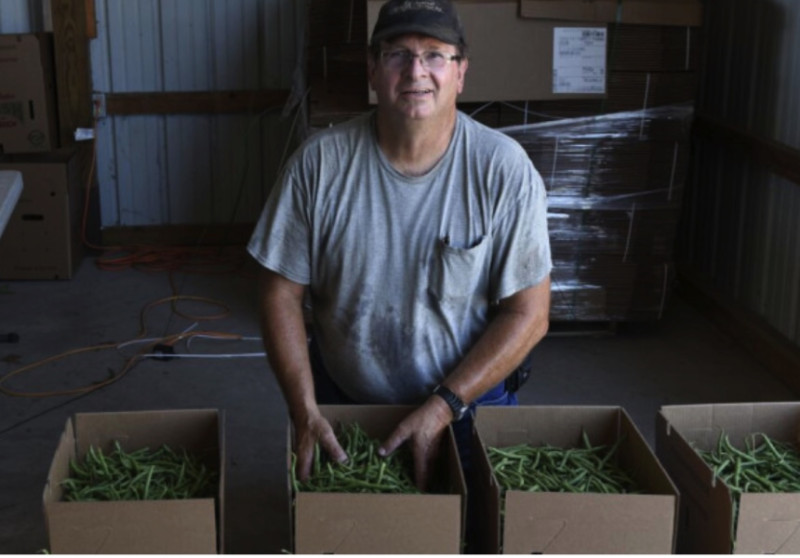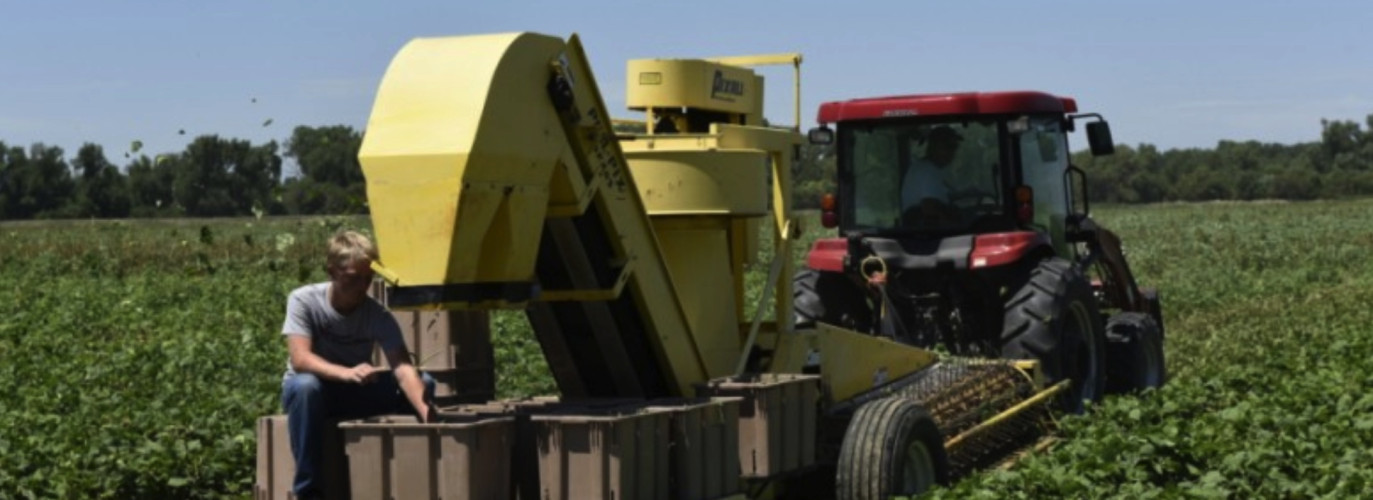
May 10, 2024

By Rick McNary
If you’ve ever gardened, the idea of raising eight acres of green beans may seem overwhelming since picking green beans is a labor-intensive job that stretches out over days because it ripens at various stages. However, Warren and Eileen Sutton of rural Norway in Republic County have figured out a way: by using a green bean variety that ripens all at once then is picked by a machine.

“We typically grow crops like soy, corn and wheat,” Warren says. “However, a few years ago, a neighbor suggested that our sandy soil was great for growing vegetables, too. I started with pumpkins and later added green beans. We’ve raised three children on a farm that’s been in the family since 1870. Our son, Allan, stayed on the farm, but they all credit life on the farm for instilling the values of faith, family and hard work.”
Unlike the variety of green beans grown in backyard gardens that produce throughout a season, the varieties Warren grows - such as Broncos and Valentines - all ripen, or set, at once.
“Pumpkins grow well, but they harvest in the fall. We currently have 50 acres planted in pumpkins and Republic County is the number one pumpkin producer in Kansas. But I wanted to grow something that harvested in the summer so local kids would have work. I’ve now added sweet corn and potatoes, so we have vegetables ripening all summer. I try not to put all my eggs in the green-bean basket.”
Warren’s eight acres of green beans will be ready for harvest in late July and, because harvesting green beans by hand is so labor intensive, Warren uses a mechanical bean picker.
“We pull this picker behind a tractor, and it pulls the plant and beans on to a conveyor belt,” Warren says. “Then an exhaust fan sucks up the lighter leaves and such leaving the green beans to dump in boxes on the back."
One worker rides on the back of the picker and swaps out the boxes. During a good year when the harvest reaches 120 bushels of beans per acre, the picker fills one tub per minute. However, heavy rains during planting seasons followed by weeks without rain has dropped their production at times to only 30 bushels per acre.
“Warren works for free some summers,” he jokes.
The boxes are taken to a nearby barn for final sorting. His workers gather around two different shaker machines that move the beans slowly on a conveyor belt for the final hand sorting. They lift off plant stalks, leaves, an occasional caterpillar and beans that are either too small or too large.
“Grandma’s lumpy beans just don’t cut it anymore with consumers,” Warren jokes. “When I was a kid, our beans had huge lumps in them from the bean pod. But we can’t let the bean start growing pods inside. People like the inside to be pod-free and all flesh.”
The beans are then loaded into a refrigerated semi-trailer for cold storage until they’re ready for delivery.
“We’re a wholesale supplier to a variety of businesses in the area with roadside stands,” Warren says. “The beans that load today will leave tomorrow.”
If you’ve ever bought green beans from Gaeddert Farms out of Buhler whose roadside stands are set up in parking lots all across Kansas during the summer to sell their famous sweet corn, those beans were grown on Sutton’s farm.
In addition, The Depot in Courtland owned by Dan Kuhn, also carries Sutton’s beans in addition to raising a variety of vegetables himself.
Dan and Warren have collaborated in in a mutually beneficial business relationship as they both grow some of the same vegetables, yet different enough to provide various farm stands around the state. While Dan focuses on growing and running his retail outlet, Warren does the distribution to the various farm stands like the Gaeddert Family Farm stands.
“The most unique thing about our beans is that they are fresh,” Warren says. “They are picked one day and on the shelf of a farm stand or store for sale the next. People like that freshness.”
When you break down what the Suttons, The Depot and The Gaeddert Family farm does, it’s actually a local food system in action. A local food system, also known as a local supply chain, is comprised of three elements: production, processing and distribution.
All three of those components are active as the Suttons raise the green beans, process them on their farm, then distribute them in collaboration with The Depot and Gaeddert Farms to the end consumer, you and me.
This story has been updated from the first version published in Kansas Living.
